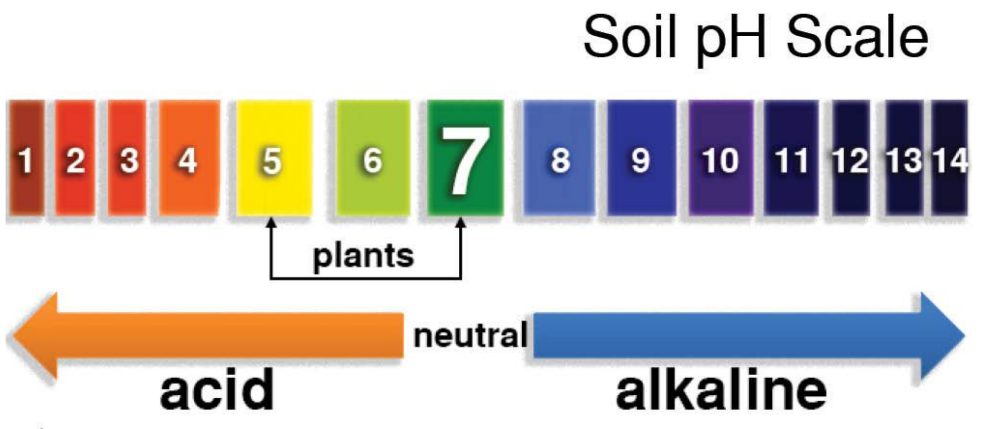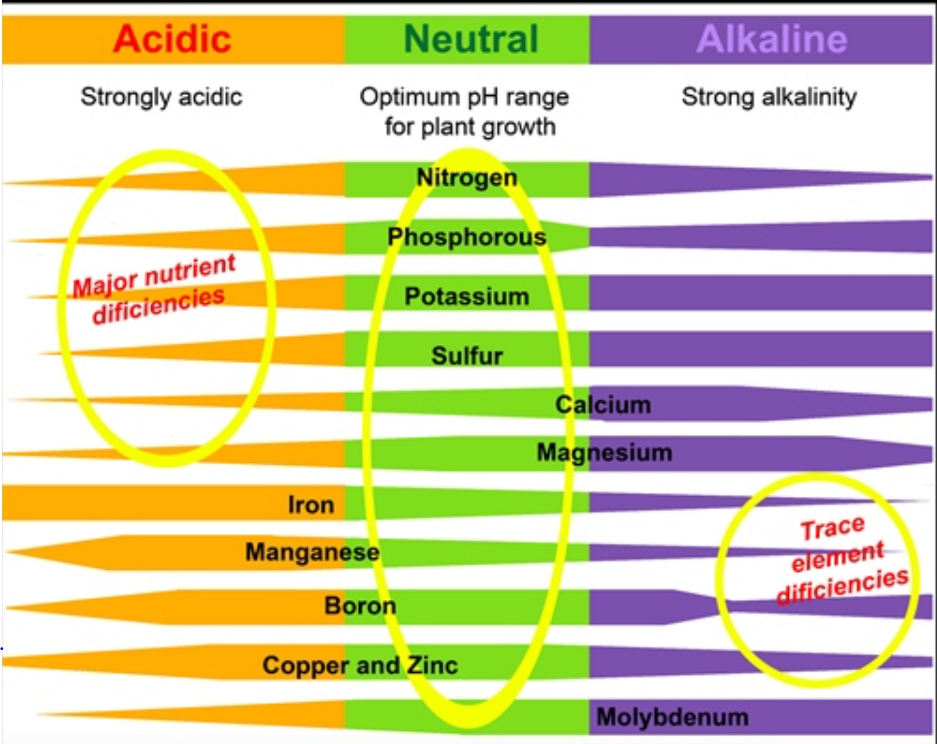If asked, most people can tell you their Social Security number and maybe their spouse’s birthday, but how many producers could accurately tell you the average pH of their farm? Hopefully, the response is, “It’s 6.5.”, and not “Less than 6.” or “I don’t know.” When it comes to crop inputs, soil pH tends to take a back seat compared to the “cooler” inputs such as nitrogen and seed variety. A soil’s pH can have an impact on nutrient availability, nutrient toxicity, herbicide interaction and soil organism activity (i.e., nitrogen fixation for legume crops).

Soils should be tested frequently, not only to check the for phosphorous and potassium levels, but to also keep an eye on the pH levels. Soil pH is a measurement of acidity or alkalinity (see Table 1). This value could change or be different based on the soil type, buffering capacity and fertilizer programs.

impact on nutrient availability.
A lower pH can limit the amount of applied crop nutrients that can be held in the soil. Therefore, it is very important to test a soil’s pH before any medium or large amount of crop nutrient is applied. This is very important when acquiring new farm ground.
The pH of a given management zone can impact nutrient availability. For example, a lower pH will allow soluble metals to become more toxic and reduce the availability of key nutrients (See Table 2).
Soils that are either too acidic or too alkaline can limit crop yield. Depending on the crop that’s being grown, an ideal soil pH can vary slight. It’s best to know what type of environment your selected crop prefers.
Recommendation:
- Test soils based on management zones (yield, soil type, organic matter).
- When correcting a soil pH, it’s important to understand the quality of the local or regional source.
- Ask your suppliers about the quality or reactiveness of the source. This information will determine application rates and how many years it could take to improve levels.
- Variable rate-application will allow producers to correct pH values for specific zones of a field. A flat rate application could be applying product to zones that are neutral and do not need additional inputs. Very rarely does 100 percent of a field require correction.




 and then
and then